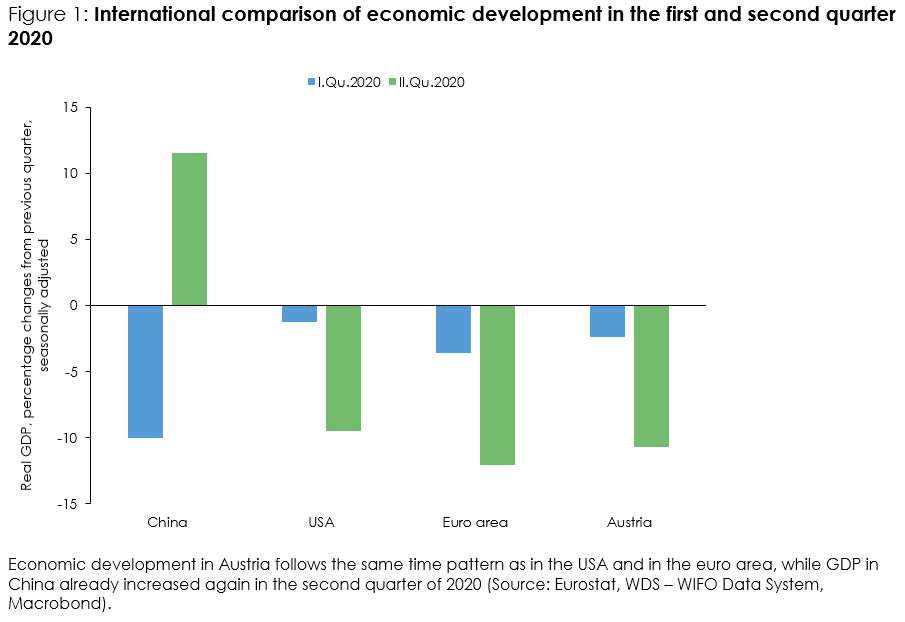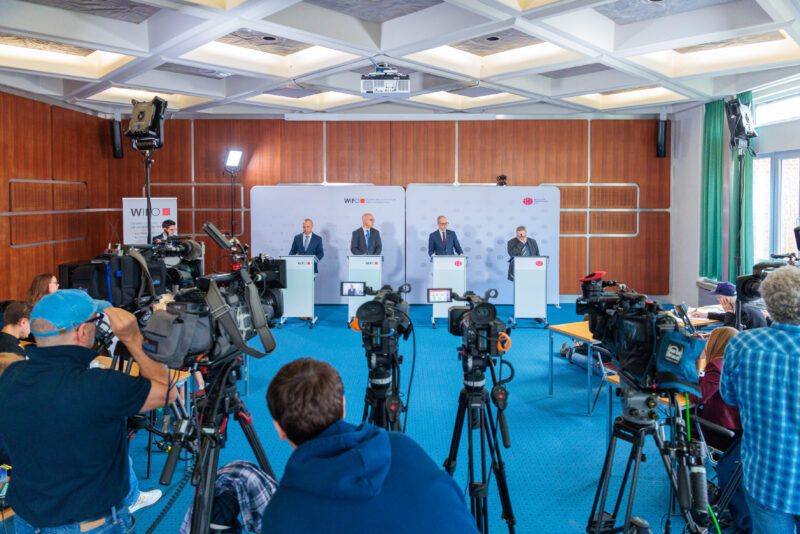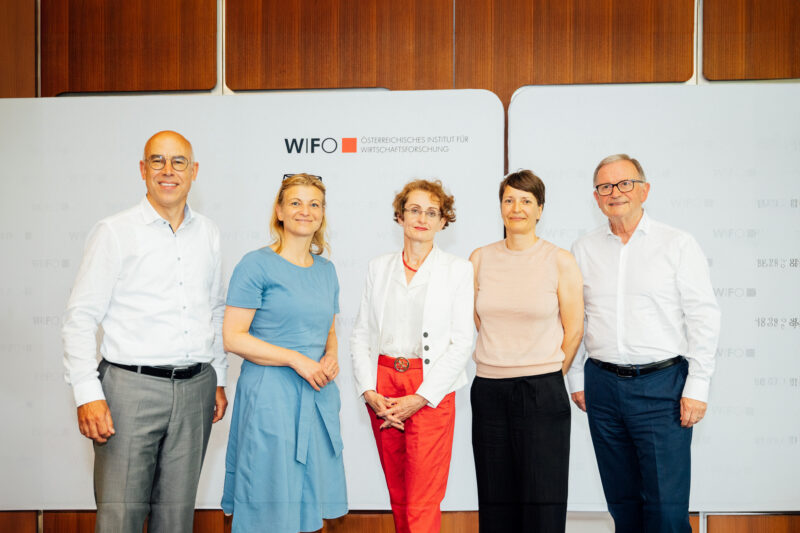
Economic Recovery is on the Horizon
"Supply restrictions and the slump in demand caused by the lockdown resulted in a massive reduction in economic activity in many countries. After the lifting of measures to contain COVID-19 infections, economic activity in the individual countries resumed asynchronously. This characterises the internationally varying dynamics", says the author of the current WIFO Business Cycle Report Christian Glocker.
In Austria, economic output fell in the first half of 2020 due to the measures taken to contain the COVID-19 pandemic. A decline of 2.4 percent compared to the previous period in the first quarter was followed by a contraction of 10.7 percent in the second quarter (seasonally adjusted according to Eurostat standard). Although companies continue to assess the current situation unfavourably in surveys, expectation indicators in particular have improved. Economic risks have recently been pointing more strongly downwards again due to the recent increase in the number of infections.
The supply constraints in connection with the COVID-19 pandemic and the loss of demand from home and abroad led to a contraction in economic output in Austria in the first half of the year. While the decline in private consumption due to restrictions in trade and many service sectors significantly dampened GDP, investment and export activities were also restricted. Concerning the production approach, wholesale and retail trade, repair of motor vehicles and motorcycles, transportation and storage, accommodation and food service activities were the main drivers of the decline in economic output, accounting for almost half of the GDP decline in the second quarter.
In the euro area, GDP in the second quarter remained 12.1 percent below the previous quarter's result. Economic output fell particularly sharply in Italy, France and Spain. In the USA, gross domestic product declined by 9.5 percent in the second quarter. In contrast, economic output in China expanded strongly in the second quarter following a drop in the first quarter.
The effects of the measures to contain the pandemic are hitting the labour market hard. The situation in Austria eased somewhat until July, but overall it remains precarious. According to preliminary estimates, the number of persons in active dependent employment in July was 88,000 lower than in the previous year (–2.3 percent), the number of unemployed persons registered with the Public Employment Service Austria (AMS) was 112,200 higher (+41.3 percent), including persons in training 107,300 (+33.0 percent). According to the national definition, the seasonally adjusted unemployment rate is therefore likely to have been 10.7 percent in July.

Please contact
























